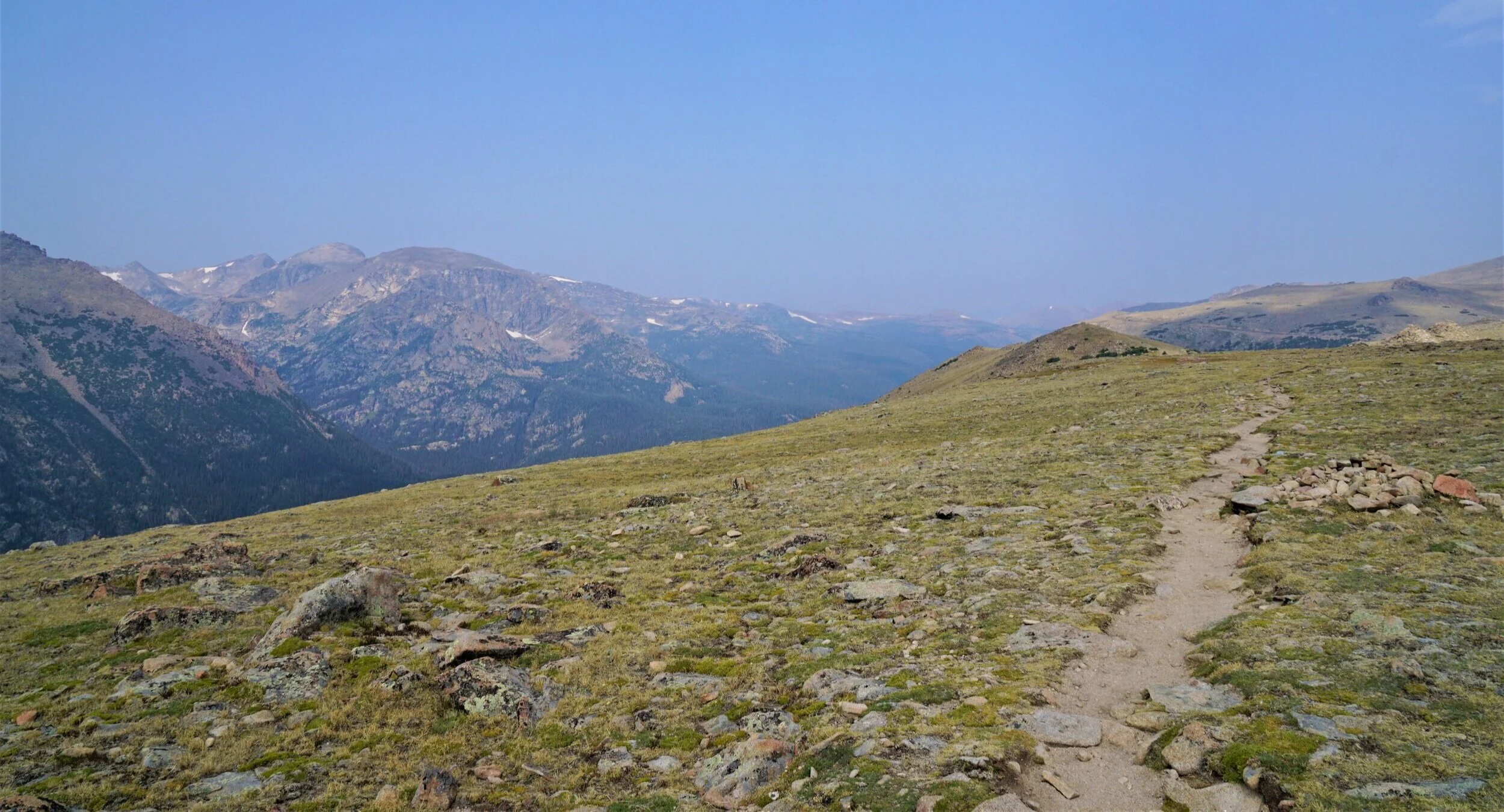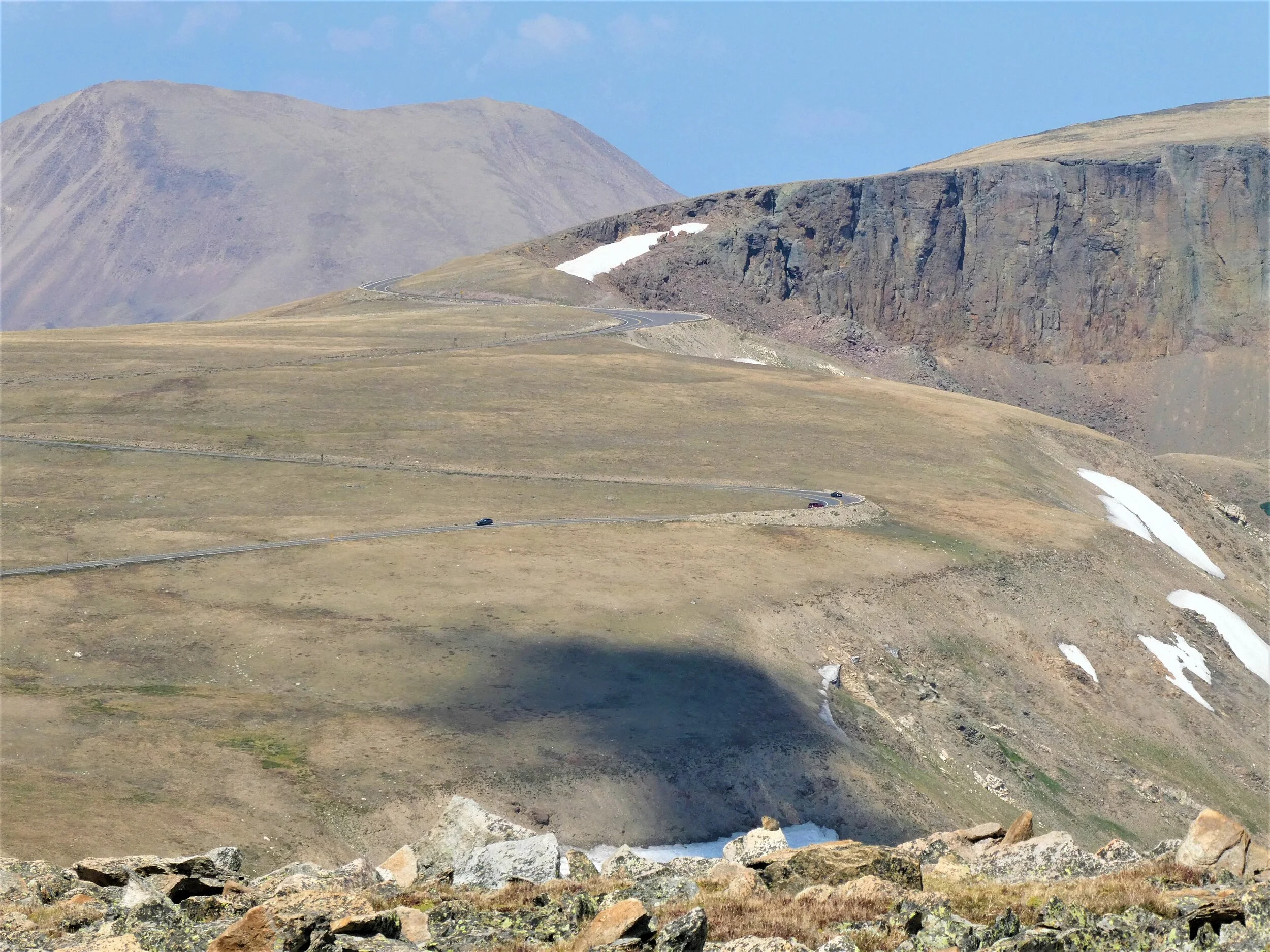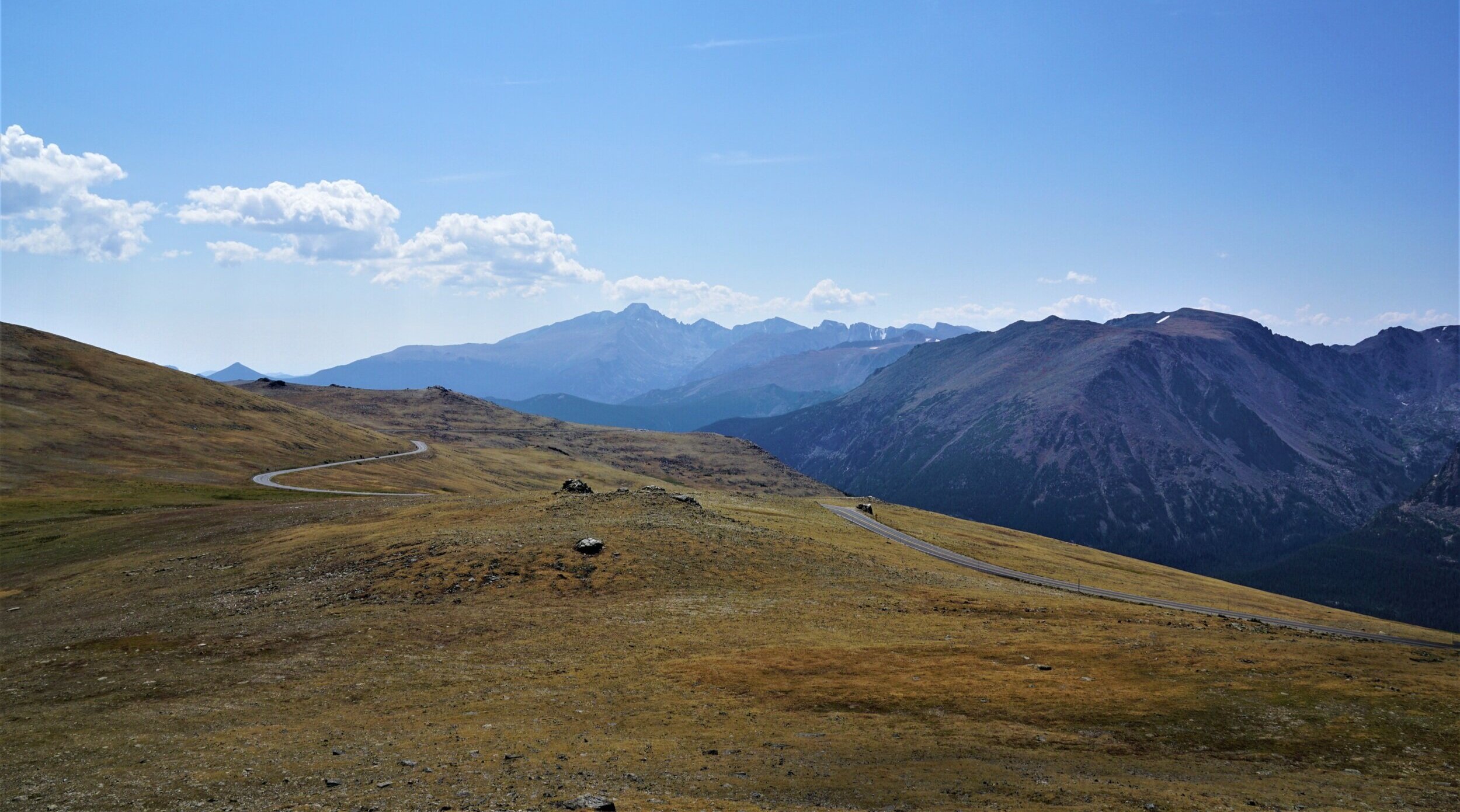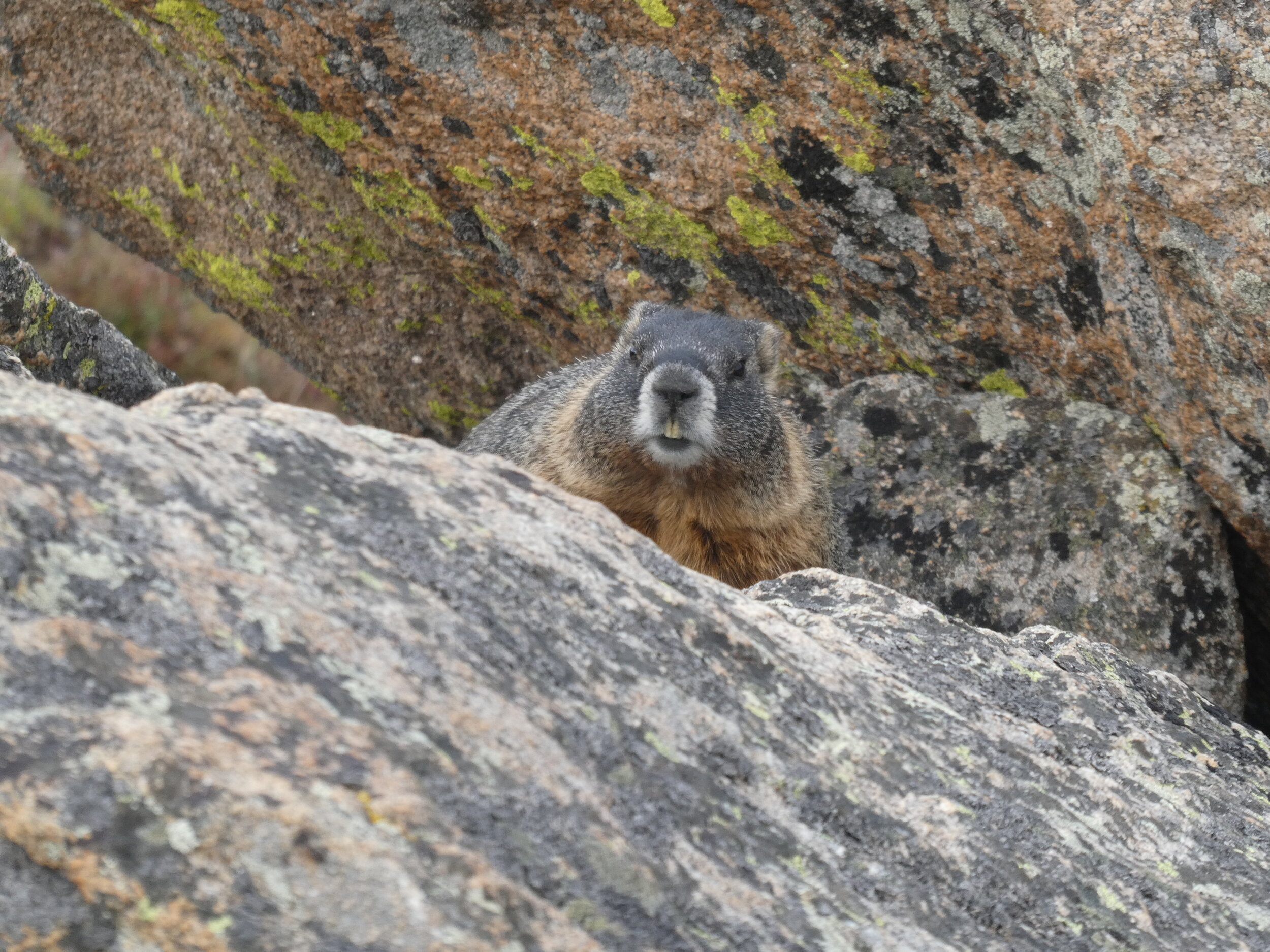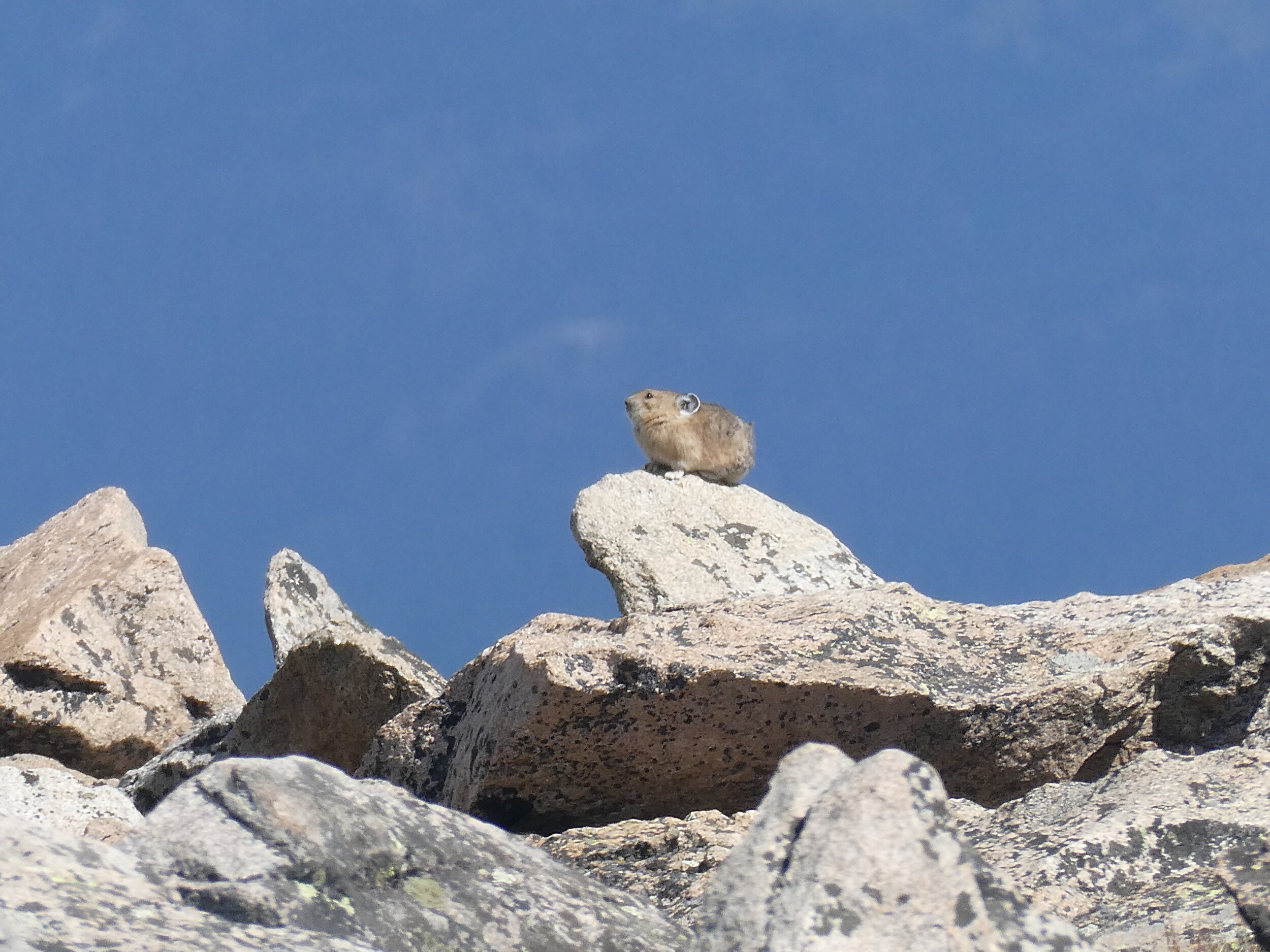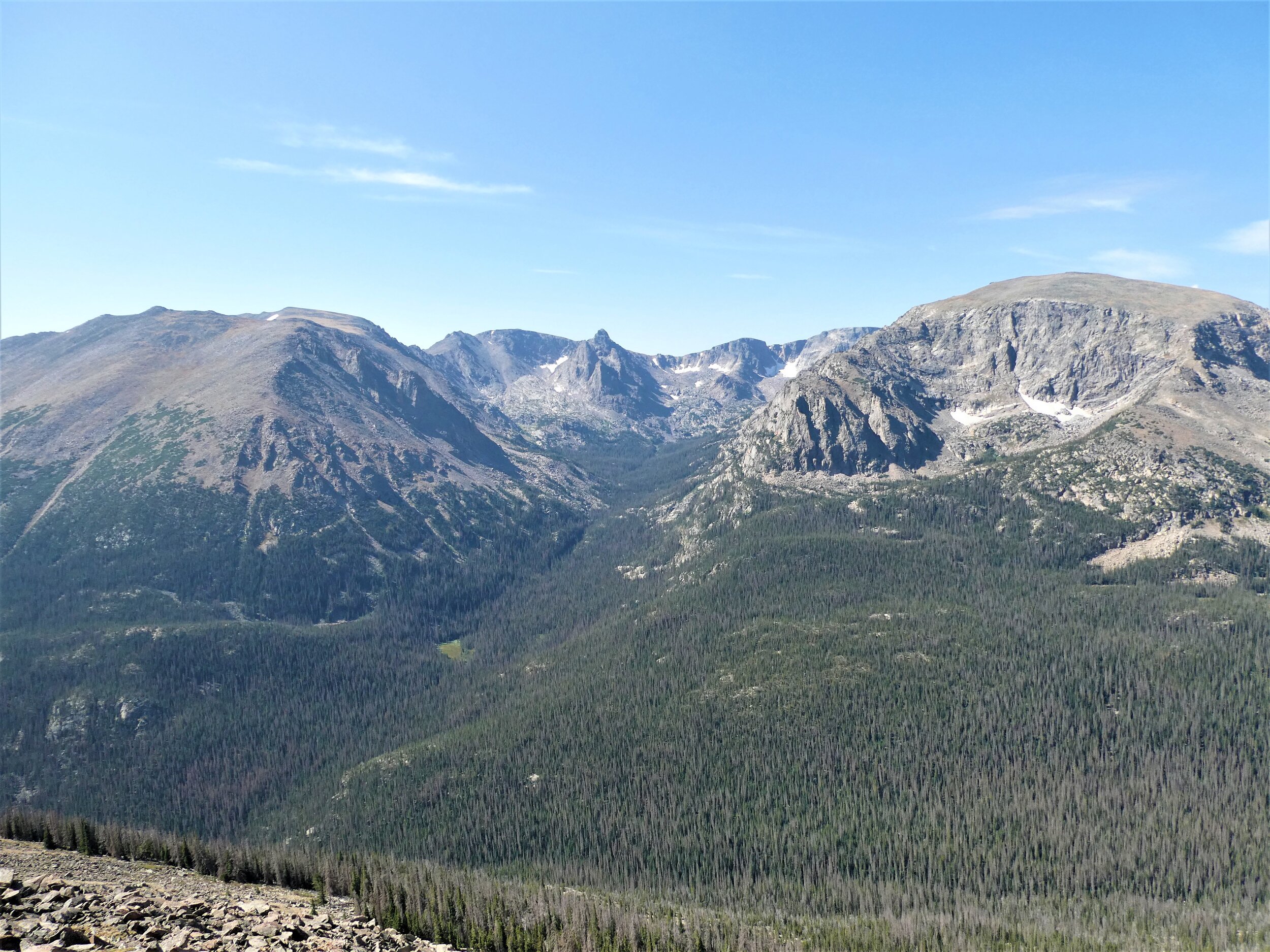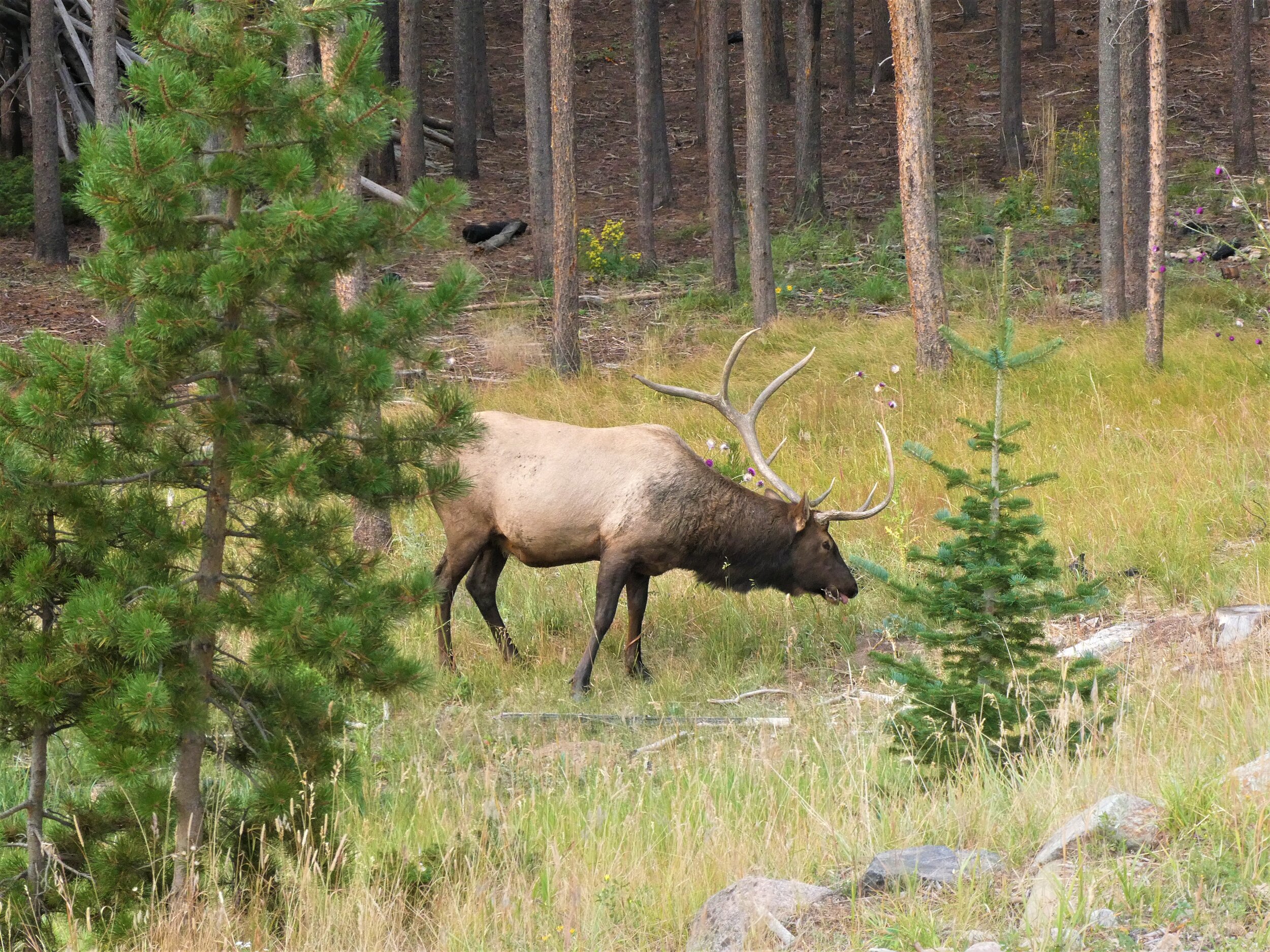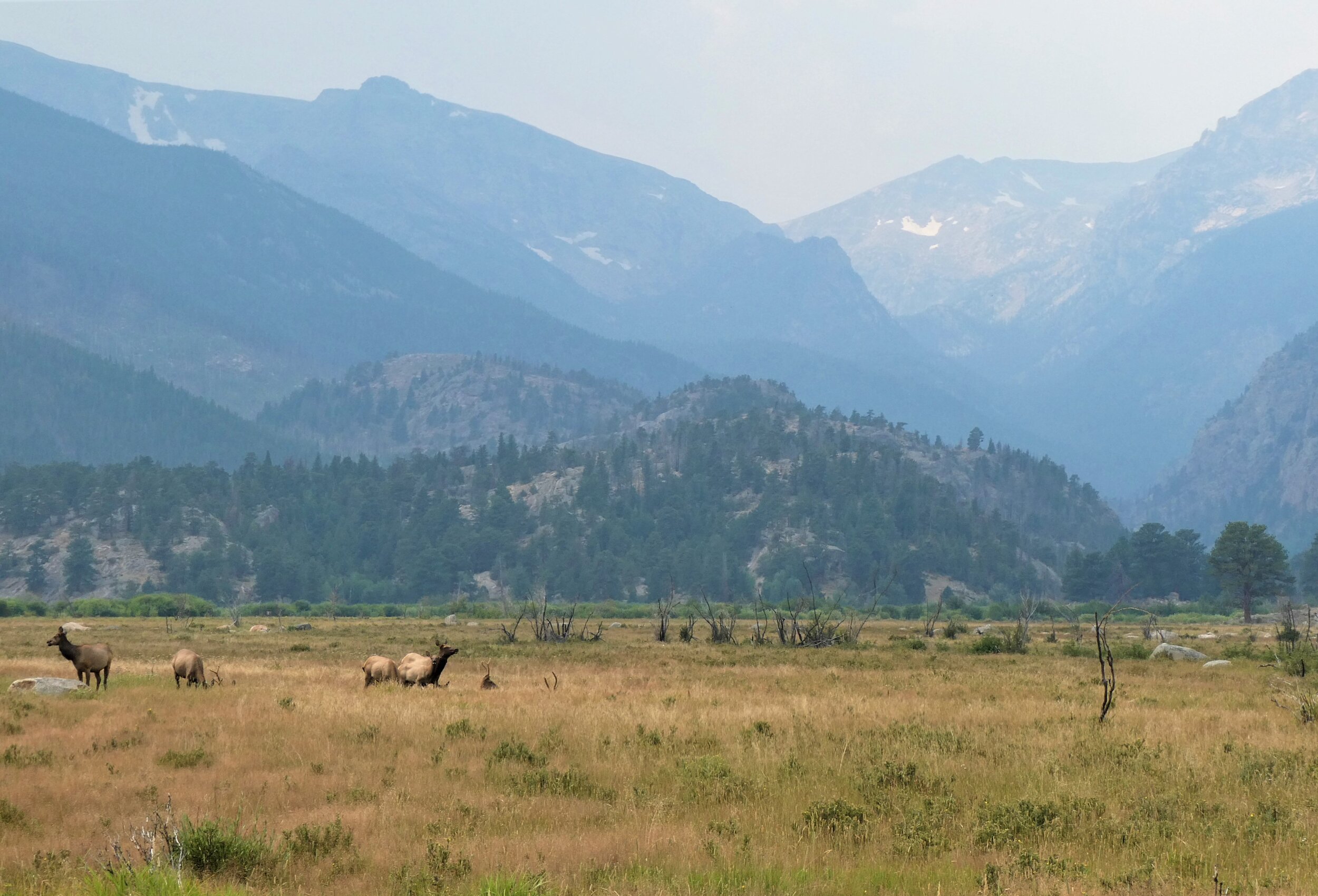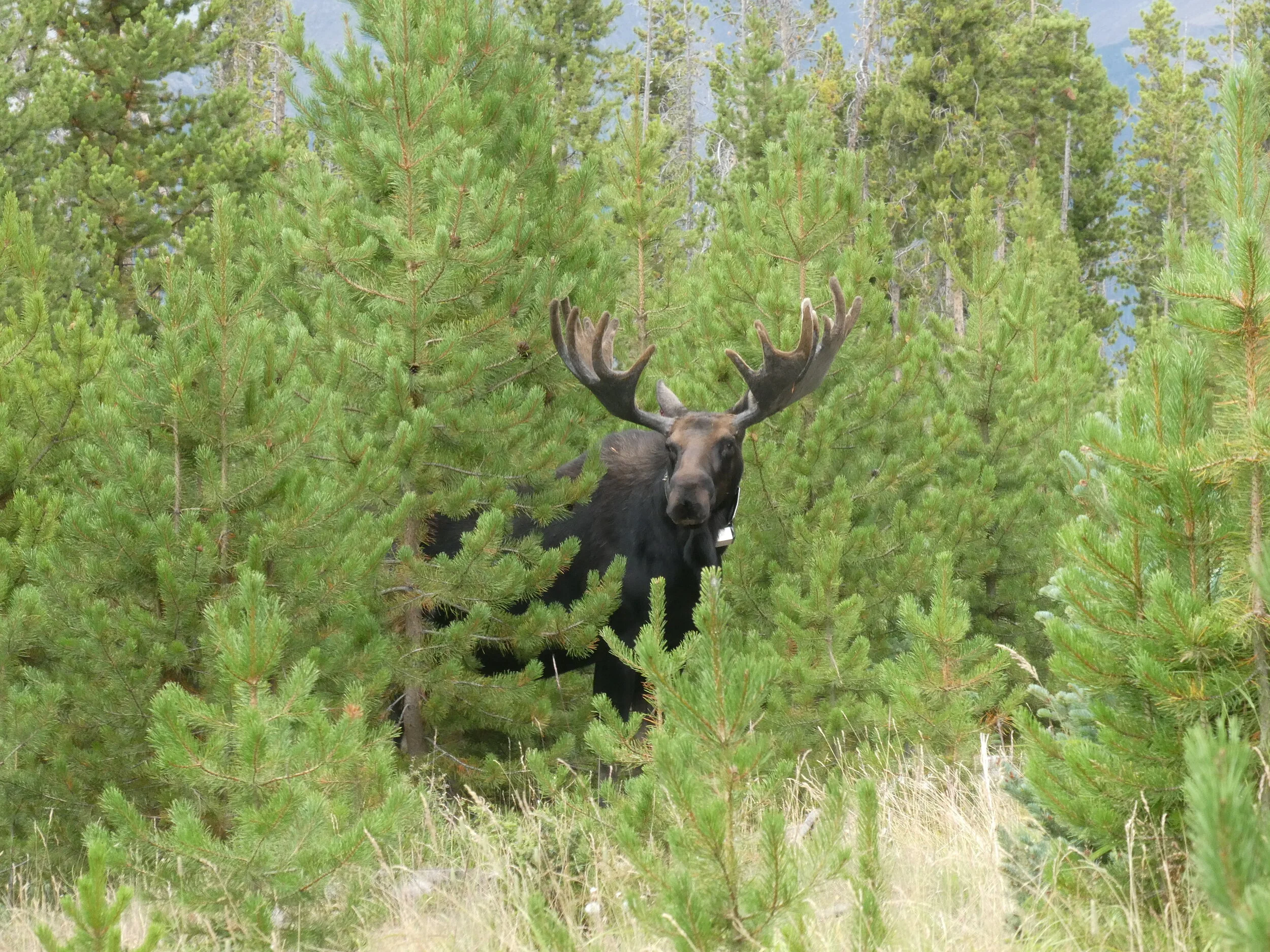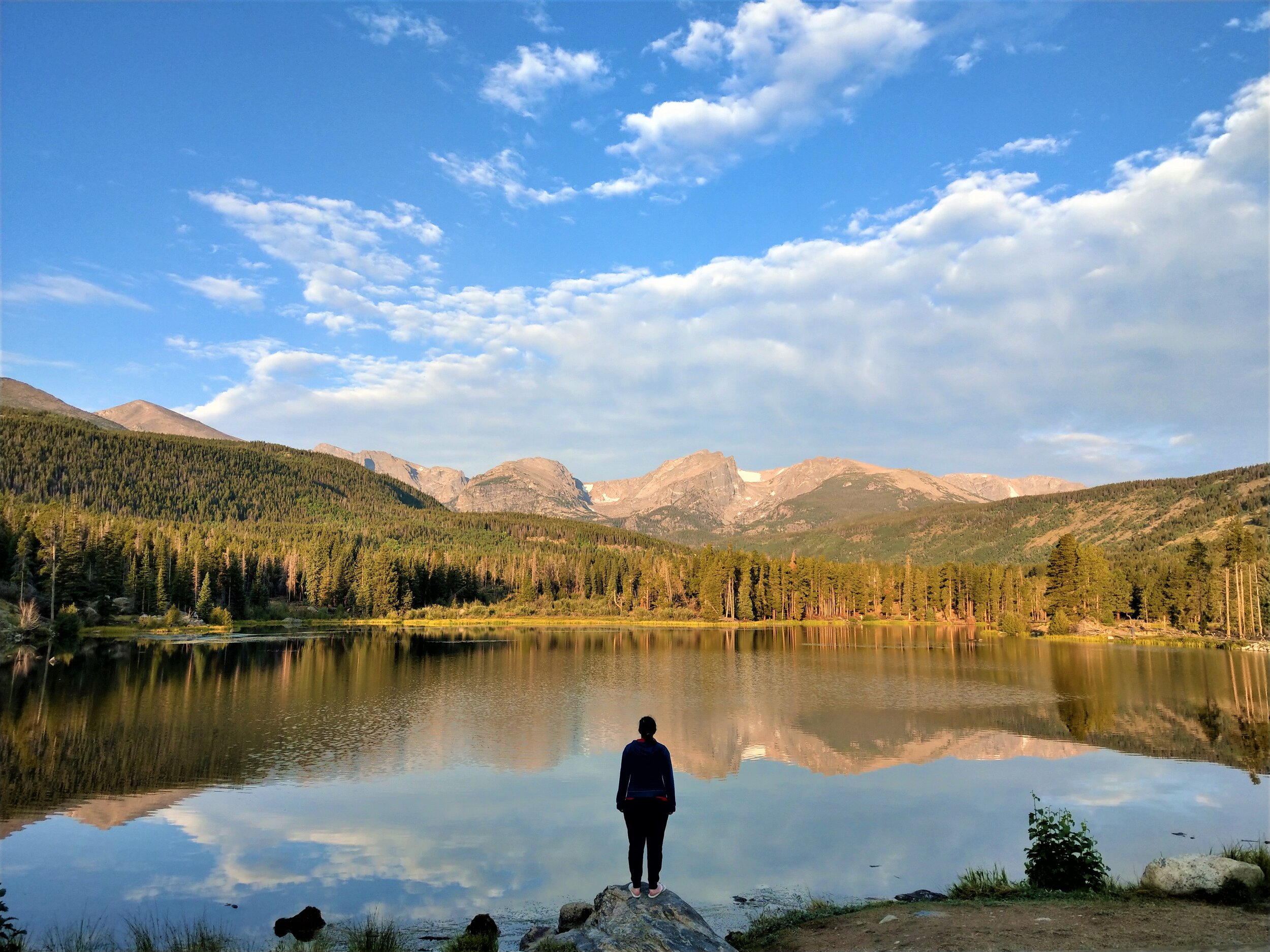Best Things to Do in Rocky Mountain National Park (plus tips and sample itineraries)
Rocky Mountain National Park is one of the most visited national parks in the country – and for good reason! Situated in the heart of the Rocky Mountains, there are hundreds of miles of trails, endless views of epic alpine scenery, beautiful scenic drives, and lots of wildlife. If you’re already on this page, I’m sure there’s no need to convince you any further why Rocky Mountain National Park is a must-see!
If you’re itching to visit, you’ve come to the right place! We’ve rounded up a list of some of the best things to do in Rocky Mountain National Park. Plus, we’ll share some sample itineraries for Rocky Mountain National Park, tips for visiting, info on where to stay, and more!
Let’s get right to it!
Article Contents
Where to go in Rocky Mountain National Park
Best things to do in Rocky Mountain National Park
Rocky Mountain National Park itineraries
Best time to visit Rocky Mountain National Park
Tips for visiting Rocky Mountain National Park
Want to save for later? Pin this post and come back when you’re ready!
South Rim of the Black Canyon of the Gunnison Guide
North Rim of the Black Canyon of the Gunnison Guide
Best Things to do in Great Sand Dunes National Park
Where to Go in Rocky Mountain National Park
First things first, let’s make sure you know the general layout of the park, so you know what’s what and where you want to go!
There are three main sections to the park:
Bear Lake Road
The east side is definitely the most popular area, particularly the Beaver Meadows entrance and the Bear Lake Road corridor. Along this stretch of the park are tons of popular hikes with alpine lakes and epic mountains, picnic areas, and a couple of campgrounds. It’s what you think of or what you see when you look at pictures of the park. There are lots of options for day hikes and lots of ways to combine them to make fun point to point hikes.
However, it can get crowded here. Early wake up calls are needed to beat the crowds to parking and on the trails. There is a super convenient shuttle system that runs through this section, though, to limit congestion at trailheads.
The east side also has two other entrances, at Long’s Peak and at Wild Basin, offering access to a variety of other hikes to summits and alpine lakes. The Long’s Peak trailhead can get crowded because of the number of people who try to summit Long’s Peak itself, but Wild Basin is a relatively quiet trailhead.
West Side (Grand Lake Entrance)
The west side of the park is much less crowded. It almost feels like an entirely different place. The scenery is quite a bit different – not as epic, but beautiful nonetheless. There are a few easy hiking opportunities here, but a big draw is access to longer backpacking routes through the park.
Trail Ridge Road
Trail Ridge Road connects the east and west sides of the park across the continental divide, and is the highest paved road in any national park in the U.S, reaching up to 12,000 feet. It cuts through the high alpine tundra and gives access to amazing views and all kinds of trails.
Bonus points if you can spot the pika in this picture!
With these three sections of the park in mind, let’s get to the real reason you came to this post…
7 Best Things to Do in Rocky Mountain National Park
If you’re someone who loves the outdoors, then a. we’ll get along nicely, let’s be friends. And b. you’ll love Rocky Mountain National Park. Even if you’re not an avid hiker, there are tons of ways to enjoy the gorgeous scenery that this park offers, from taking scenic drives to just enjoying a road side picnic. Let’s go over each of them so you can take your pick!
1. Hiking in Rocky Mountain National Park
Ok, if you know us, you probably saw this one coming – hiking is our top recommended thing to do in Rocky Mountain National Park, hands down. You’ll experience beautiful scenery from the roads all throughout the park, but there’s just something particularly awesome about trekking to its hidden beauty beyond the roads on your own two feet.
There are literally hundreds of miles of trails in the park to choose from, ranging from easy and quite literal walks in the park, to challenging summit climbs. So there is really something for everyone.
Many of the park’s best hikes can be found along the Bear Lake Road corridor, particularly out of the Bear Lake Trailhead parking lot, but many good ones are along Trail Ridge Road as well. Here are some particularly gorgeous hikes in Rocky Mountain National Park to spark your hiking wanderlust.
Emerald Lake – a short, relatively easy hike that goes by three alpine lakes in just a 3 mile round trip. This is a big bang-for-your-buck hike, and for this reason, do expect crowds. Lots of them. This is one of the most popular go-to hikes for many park visitors, but can you blame them?…look at these gorgeous views!
Sky Pond – this was our favorite hike in Rocky Mountain National Park. This is a longer, more challenging hike out of the Bear Lake or Glacier Gorge Trailheads, but it has a little bit of everything – waterfalls, three alpine lakes, a fun scramble, and epic mountain views.
Ute Trail to Timberline Pass – this is an easy hike through Rocky Mountain National Park’s alpine tundra. Located off Trail Ridge Road, this relatively flat hike has non-stop 360 degree views and lots of opportunities to spot cute pikas and marmots!
Tips for hiking in Rocky Mountain National Park
Start early. If you want to hike out of a popular trailhead like the Bear Lake Trailhead, it pays to get an early start so that you can find a parking spot and avoid some heavy crowds. It also gives you enough time to finish before afternoon thunderstorms roll in, which brings me to my next point…
Avoid the afternoon thunderstorm. When they say the Rockies tend to get PM thunderstorms, they mean it! Like clockwork, these storms seem to roll in every afternoon around 2 pm. Plan on being below tree line by 2 pm at the latest and make sure to check the forecast before heading out, ideally with a ranger.
Make sure you acclimate before attempting any high altitude challenging hikes. The Bear Lake loop, Emerald Lake, Deer Mountain, Gem Lake and the Ute Trail are good lower elevation or easy high altitude trails for this.
2. Drive Trail Ridge Road
If scenic drives are your thing, then look no further than Trail Ridge Road in Rocky Mountain National Park. This road is the highest paved road in any national park, capping out at just over 12,000 feet! It cuts east to west across the park’s alpine tundra landscape, giving access to epic views and beautiful trails, making this a must-do on any Rocky Mountain National Park itinerary.
About the park’s alpine tundra
Did you know that one third of the park is actually designated as alpine tundra? It plays a big part in this park and makes it a very unique place to visit in the continental U.S., and Trail Ridge Road gives you the most direct access to it.
The tundra begins between 11,000-11,500 feet and is characterized by its treeless landscape and harsh climate. It’s chillier and windier up here than in other places of the park, lending to a unique population of hardy plants and animals. This is a great place to spot animals like marmots and pika scurrying around on the rocky terrain…they’re so cute! Bighorn sheep and elk are also commonly spotted in the tundra during the summer months.
Best overlooks on Trail Ridge Road
Rainbow Curve
Forest Canyon Overlook
Best easy hikes on Trail Ridge Road:
Ute Trail to Timberline Pass – a relatively flat 4 mile out and back trail with stunning 360 degree views of the surrounding tundra.
Tundra Communities Trail – an easy 1.2 mile out and back interpretive trail with amazing views.
Alpine Ridge Trail – a must -do on most people’s RMNP itineraries. This short 0.6 mile out and back “hike” is a steep stair climb up to a view point from the Alpine Visitor Center.
Tips for driving Trail Ridge Road in Rocky Mountain National Park
Wear layers. Like we said above, it’s a bit chillier up here, with average temps in the 50s in its warmest months.
Wear sunscreen and a hat. Despite the chiller temps, the tundra is completely exposed and the sun can be strong up here!
Bring lots of water to stay hydrated as you acclimate to this higher altitude. Spend a day or two acclimating at lower elevations in the park if you plan on doing any strenuous hikes up in the tundra.
Try visiting as much of the road as possible in the morning and early afternoon. As we mentioned above, afternoon storms are extremely common and typically occur around 2 pm. Trust us on this one, we speak from personal experience as we were pretty much chased out of our hikes every day from thunder and rain! This is particularly important to be conscious of up in the tundra, where you’ll be completely exposed to the elements, making a lightning storm that much more dangerous. If you hear thunder in the distance, don’t take your chances. We missed out on hiking the Alpine Ridge Trail because of this, but we knew it was the safest thing to do.
Bring rain gear in case you do get caught in the rain.
Stay on the trails! The park keeps very well maintained and clearly marked trails, and it’s for a reason. Walking on tundra, or even pulling off the road into non-designated parking areas, can destroy the vegetation and erode the soil which can take hundreds of years to recover. It definitely made us sad to see so many people walking off trails or off to random places on the side of the road for pictures…but trust us, the views from the trail are just as good, if not better…so there’s no need for any of that!
Timing: I would give at least a half day to drive Trail Ridge road to make time for stopping at viewpoints as well as hiking a few of the short tundra trails.
3. Stroll around a lake
Rocky Mountain National Park has no shortage of beautiful lakes that are easily accessible to everyone. Here are just a few!
Sprague Lake
This was our favorite lake in Rocky Mountain National Park. We visited this lake every single day we were in the park! That might sound excessive, but this lake was just the perfect spot to take a quiet peaceful stroll. It was never overly crowded, and the views were amazing. Plus, we could walk to it from our campsite! (We’ll talk more about our campsite below, in case that piqued your interest!)
Sprague lake is a great place for sunrise and sunset (moreso for sunrise because you can see the alpine glow hit the mountains then), and also a good place to spot wildlife like moose, elk, and mule deer. Before visiting, we were told that a bull moose visits the lake around 6 am like clockwork each morning, so part of our desire to visit this lake on the daily was to try to spot him. We had no such luck, but a little more searching did lead us to this well hidden female moose just hanging out in the woods!
Bear Lake
A stroll around Bear Lake is one of the most popular things to do in Rocky Mountain National Park. It’s short, it’s easy, and it’s beautiful. A perfect trio.
It does get crowded since it is so accessible, so don’t expect solitude here, but it is worth a visit if you find yourself in the area for another hike, or if you just want to experience this part of the park without going on a huge day hike.
Irene Lake -
This lake is actually found on the lesser visited west side of the park, on the other side of the continental divide. This is a small 0.3 mile easy loop around an extremely peaceful lake. It doesn’t have the epic mountain backdrop of the other lakes on this list, but it makes a great spot to get out and stretch your legs and enjoy a piece of the park in solitude.
4. Search for wildlife
A lot of people (including us!) come to Rocky Mountain National Park in hopes of spotting some cool wildlife. Some of the top contenders are elk and moose, but there are also lots of mule deer, pika, marmots, bears, bighorn sheep, and more.
More than likely, you’ll spot wildlife right from the comfort of your car as you drive along places like Bear Lake Road and Trail Ridge Road. That’s actually how we saw most of the elk and mule deer we saw in the park! But we also saw some along the trails and near lake sides. The best time to spot them is at dawn and dusk.
Here are a few tips for spotting wildlife in Rocky Mountain National Park:
Elk – these guys are all over the place, but the best time to spot them is in fall since it’s the mating season. At this time, they can be found in the meadows at lower elevations, like the Moraine Park area (we saw a few groups here in late August). In the summer, herds are commonly spotted above tree line, particularly along Trail Ridge Road and from viewpoints like atop the Alpine Ridge Trail.
Mule Deer – these guys are also commonly spotted throughout the park. Look in meadows and open areas such as Moraine Park, Horseshoe Park, and Upper Beaver Meadows.
Marmots and pikas – these cute little critters are found in the high alpine tundra. They can be spotted along hikes off Trail Ridge Road, and in the high elevation hikes out of Bear Lake (we saw some at Sky Pond!). Marmots are pretty easy to spot since they’re pretty big, but pikas are small little puffs of fur that tend to blend in with the rocks. We usually spotted them after hearing their little high-pitched squeaks that sound like a dog toy.
Bighorn sheep – we hear that they are commonly seen at Sheep Lake in the summer months, but we didn’t go there.
Moose – these guys are a little more elusive to find. For your best chances, be on the lookout at dawn and dusk near water. They are most often spotted at Sprague Lake and Coyote Valley (on the west side of the park). We spotted one at both places!
5. Have a picnic
This is a simple activity that anyone can enjoy in the park. There are plenty of nice picnic areas to enjoy lunch or a snack. Here are some of our favorites:
Upper beaver meadows - this has a small series of easy trails as well to walk around for wildlife spotting.
Moraine Park – the road into Moraine Park has a few different picnic areas with awesome views over the moraine to the mountains. Herds of elk and deer are often spotted here as well.
Tuxedo Park – this is a cool roadside stop off of Bear Lake Road. We stopped here because it was the last place we found to have cell service and we needed to make a few calls, but then we also wandered down to the picnic area and walked around the trails in the area. It’s a really nice spot by a stream that you’ll likely have all to yourself…and a good spot for spotting wildlife.
Beaver Creek – this is a nice picnic spot along the western side of the park on Trail Ridge Road with great views and a serene setting.
A few tips for picnicking in Rocky Mountain National Park
The park has really nice infrastructure and well laid out picnic areas, but there was one striking thing missing anywhere in the park…and that was pavilions! Normally we wouldn’t notice or comment on the number, or lack thereof, of something so random as pavilions, but in a place that brings as much rain as the Rockies, we definitely noticed it here! If it starts raining at picnic areas or campsites, there’s really no place to take shelter, so come prepared.
We’ll mention it again here – watch out for the critters trying to steal your food. Trust me, I know those cute little chipmunk eyes will lure you in, but don’t give in to their charm…their aggressive behavior is because of their easy access to human food, so don’t enable them…it’s for their own good!
6. Camp
We loved camping in Rocky Mountain National Park, and we would definitely say it’s one of the best things to do here. And, if you want to stay directly in the park, camping is the only way to do it, as there’s no other types of accommodation.
There are five campgrounds within the park. You can learn more about each of them, including their opening and closing dates (which differ depending on the site’s location), on the national park website here.
Two of these are first come first serve, including the lone campground on the west side of the park. The rest require reservations, over several months out as they tend to fill up early. They are booked on recreation.gov and cost $30 per night. We booked about 2.5 months in advance and got one of the last few campsites available.
Glacier Basin Campground
We spent four nights at the Glacier Basin Campground and loved it here for several reasons:
The location is ideal. It’s the closest campground to the oh so popular Bear Lake Trailhead, so it saves you some driving time so that you can sleep in just slightly longer.
The views are pretty great – you basically get a straight shot back to the Bear Lake mountains.
There is a trail right from the campground that leads to Sprague Lake. This is a quiet, short, easy, forested trail. We walked it several times to visit the lake, particularly for sunset.
The campground is right across the street from the Bear Lake Road Park and Ride, which is so convenient. You can just walk to this lot, hop on the shuttle, and get to most major trailheads along the road, including Bear Lake. It couldn’t be any easier!
View from the Glacier Basin Campground in Rocky Mountain National Park…not too bad, huh?
Tips for camping in Rocky Mountain National Park
No campgrounds in the park have showers…so be prepared for that!
Don’t expect any cell service. We didn’t have any at Glacier Basin. We had to drive down to the Tuxedo Park area before we got any.
Expect daily afternoon rain and thunderstorms. Make sure your tent (if that’s how you’re camping) is waterproof. It can also get quite windy so make sure your tent is staked down well. And as we mentioned above, the campgrounds don’t have any pavilions for shelter as you cook for or eat, so if you’re tent camping, bring some sort of pop up canopy that you can put over the picnic tables at your site in case it rains.
Practice strict leave no trace principles! Trust us…the wildlife at this park, particularly at the campground, is insane. Don’t worry, it’s not the bears I’m talking about here. It’s the smaller critters…primarily the chipmunks. Yes, the chipmunks. The chipmunks at Glacier Basin were hands down the most aggressive animals we have ever encountered in our entire lives. In all the places and parks we’ve camped, we’ve never had quite this issue. But shooing away the chipmunks was a constant activity at camp. As soon as we brought food out, they were right there, ignoring our shouts and waves, bold as ever. The second you turn your back, they pounce. Kevin even said that as he was trying to shoo one out of our site away from our dinner he had “never seen a look like that in a chipmunk’s eyes” before. I wish I was exaggerating, but I’m not. It’s kind of funny looking back, but every afternoon throughout the entire campground we would just hear people yelling and shooing chipmunks away. Here, it is particularly important to never leave any food or scented items unattended, and always leave behind a clean campsite…rangers frequently go around issuing warnings and fines.
Oh, and do not leave your car doors open! Because they aren’t afraid to jump in there either! There are sporadically placed bear boxes throughout the campground, and we strongly suggest you use one rather than keep the food locked up in your car. We had a mouse infestation of our car after just the first night in the park!...not fun. Basically what I’m trying to say is keep an eye on your stuff at all times and be extra vigilant at this park.
Don’t expect to sleep in. Mornings aren’t so quiet when you’re camping in Rocky Mountain National Park. Many people start getting up at the crack of dawn and being pretty noisy as they get ready for early starts on the trail or for sunrises. And we recommend you do, too! Speaking of which…
7. See the sunrise
Rocky Mountain National Park has some killer sunrises. Even if you’re not a morning person, it’s worth it.
Our favorite sunrise spot was Sprague Lake. It’s not crowded, and the alpine glow off the mountain backdrop is so gorgeous.
It’s also nice to see the sunrise on a trail, like we did after our early start up to Sky Pond.
I would also imagine the sunrise from viewpoints along Trail Ridge Road would be pretty epic as well…so get out there and see it!
Suggested Itineraries for Rocky Mountain National Park
Now that you’re armed with all the amazing things to do at Rocky Mountain National Park, the next step is putting it all together into one epic itinerary. Well, we have some good news and some bad news.
The bad news? You can spend months in the park and still not run out of things to do…meaning if you’re only there for likely just a few days to a week, you have some serious picking and choosing to do.
The good news? Even if you’re only in Rocky Mountain National Park for just a day, you can still see some of the best spots!
Here are some sample Rocky Mountain National Park itineraries for you to draw some inspiration from.
One day in Rocky Mountain National Park
Get up early and spend the first half of the day at the Bear Lake area of the park. If you’re not properly acclimated or just want a short hike, we recommend doing the hike to Emerald Lake or the hike to Bierstadt Lake, and then tacking on the Bear Lake Loop with either. If you’re acclimated and up for a challenge, hike to Sky Pond. On your way back down Bear Lake Road, stop at Sprague Lake.
If the weather allows, spend the afternoon driving Trail Ridge Road. You won’t have time to do any major hikes, but you can stop at the viewpoints and do one or two short trails, like Tundra Communities and Alpine Ridge Trail.
Two days in Rocky Mountain National Park
If you need to acclimate, spend the first day doing one or two easy hikes at lower elevation. Try Deer Mountain, Gem Lake, or Emerald Lake. Visit Sprague Lake and Bear Lakes for easy strolls with beautiful views.
If the weather allows, drive Trail Ridge Road.
On the second day, do a bigger hike, like Sky Pond, or Flattop Mountain, depending on your level and preferences. Or, if you couldn’t yesterday, drive Trail Ridge Road. Spend the whole day along the road, doing a few small hikes and a bigger hike…perhaps the Ute Trail, or the hike to Mount Ida. There are plenty to choose from!
Three days in Rocky Mountain National Park
Follow the two day itinerary above. On the third day, check out a different section of the park for some hikes, such as the Long Peak’s entrance (the hike to Chasm Lake looks incredible!) or the Wild Basin entrance for access to tons of backcountry lakes.
Four days in Rocky Mountain National Park
With four days in the park, spend one day exploring the less visited west side of the park. Check out Coyote Valley, Irene Lake, and Grand Lake or take your hand on some of the park’s longer and quieter trail systems.
Honestly, these are just examples and there are so many ways to organize your Rocky Mountain National Park itinerary. No matter what you choose, though, you can’t really go wrong!
Best Time to Visit Rocky Mountain National Park
The most ideal time to visit Rocky Mountain National Park to see the highlights is mid-summer to early fall. This is when the weather is nicest and there’s no snow. However, depending on the winter’s snowpack, snow can linger well into June or even July on the higher elevation trails. And snow can fall as early as mid-September. Check conditions here when planning your trip.
Fall can be a nice time to hike in lower elevations to see the beautiful Colorado larches, so it’s still a pretty busy time of year. Winter is quieter, but those with the right gear and experience can still find snowshoeing opportunities. The winter hike along the Emerald Lake trail looks absolutely gorgeous!
Remember that Trail Ridge Road is closed usually between October and June. Be sure to keep that in mind when planning your trip to RMNP!
Tips for Visiting Rocky Mountain National Park
We’ve gone over most of these at some point in this article so far, but we just wanted to summarize and reemphasize our best tips for visiting the park here.
Be vigilant about watching wildlife around food and practice strict leave no trace principles.
Be prepared for daily afternoon storms. Bring rain gear with you on hikes, and if you’re camping, make sure you are pack some sort of shelter so you can cook and eat outside of the rain.
To avoid parking hassles and trailhead congestion, take advantage of the RMNP shuttle. There are a few lines that run along the Bear Lake corridor, the park’s busiest section. From our experience, they are super convenient, run often, and are very reliable. Check out schedules and stops on the NPS website.
The weather here can be very hot and dry. Pack chapstick, a hat, sunscreen, and lots of water. If you’re going up into the tundra, pack layers, as the weather can be much chillier and windier up there.
If you want to stay inside the park, camping is your only option. Otherwise, look at Estes Park for plenty of lodging option on the east end, or look into Grand Lake for places on the west side.
There are so many fun things to do in Rocky Mountain National Park that you really can’t go wrong! We hope this helps you plan your future travels to this awesome park. Anything you would add to the list? Any questions? Comment below!
